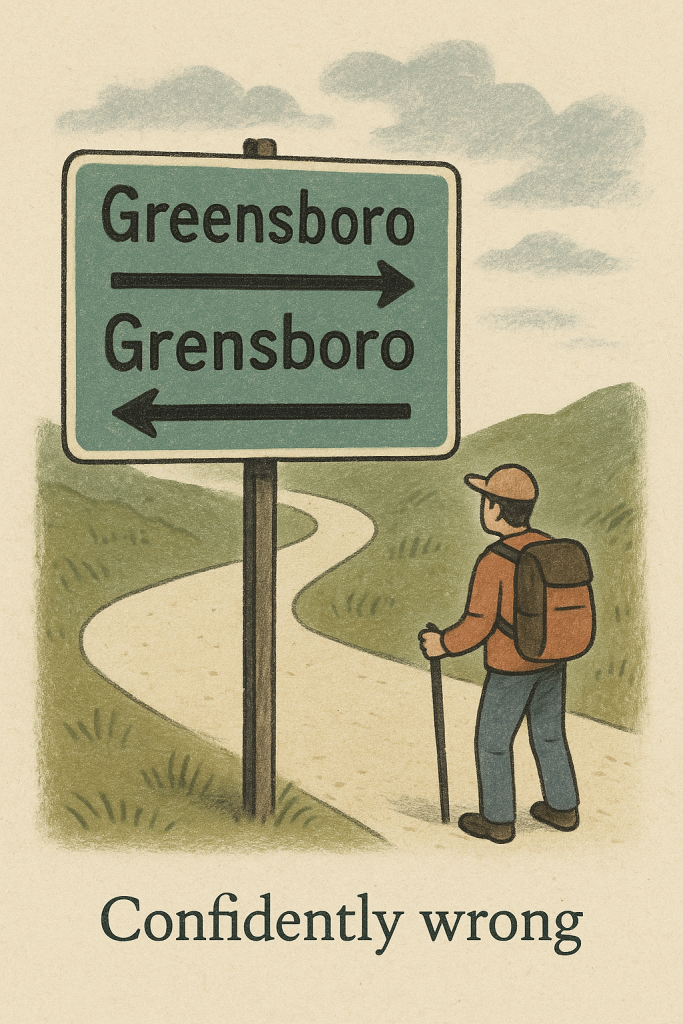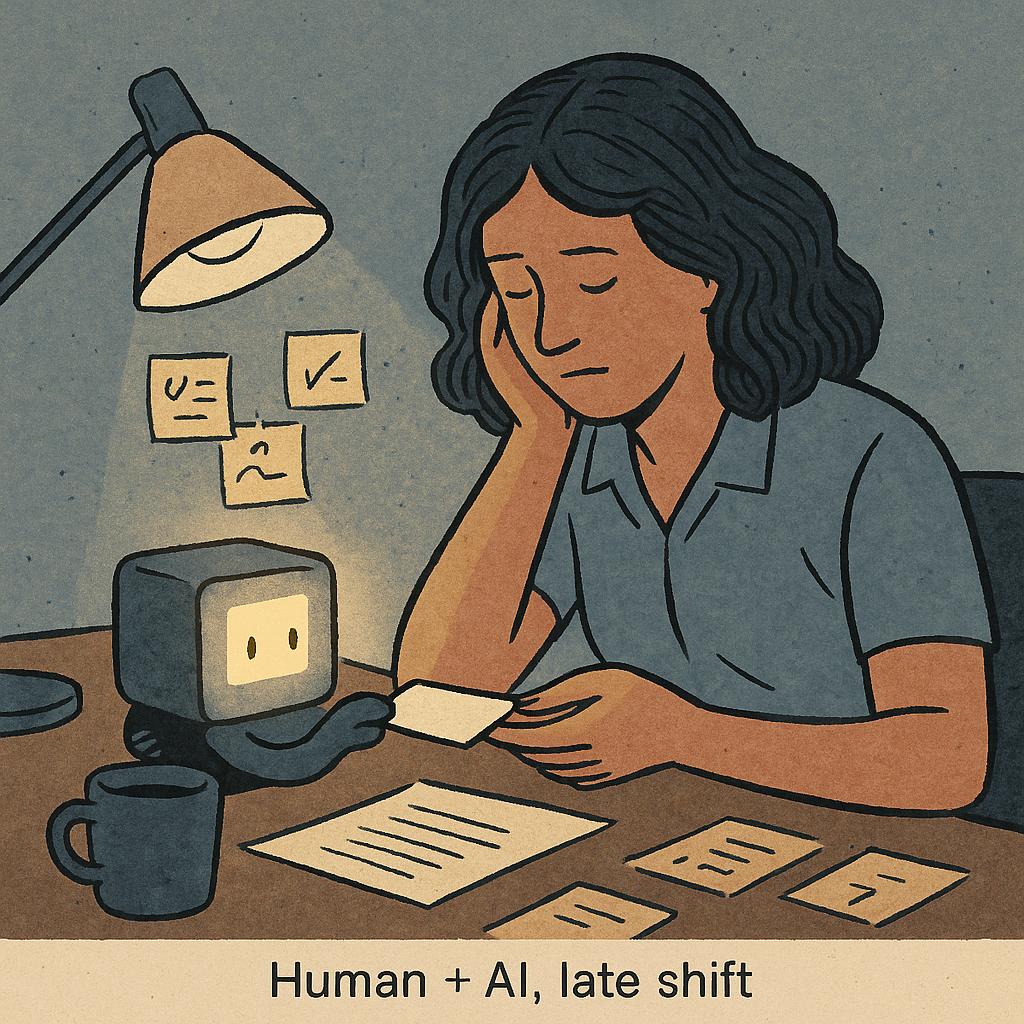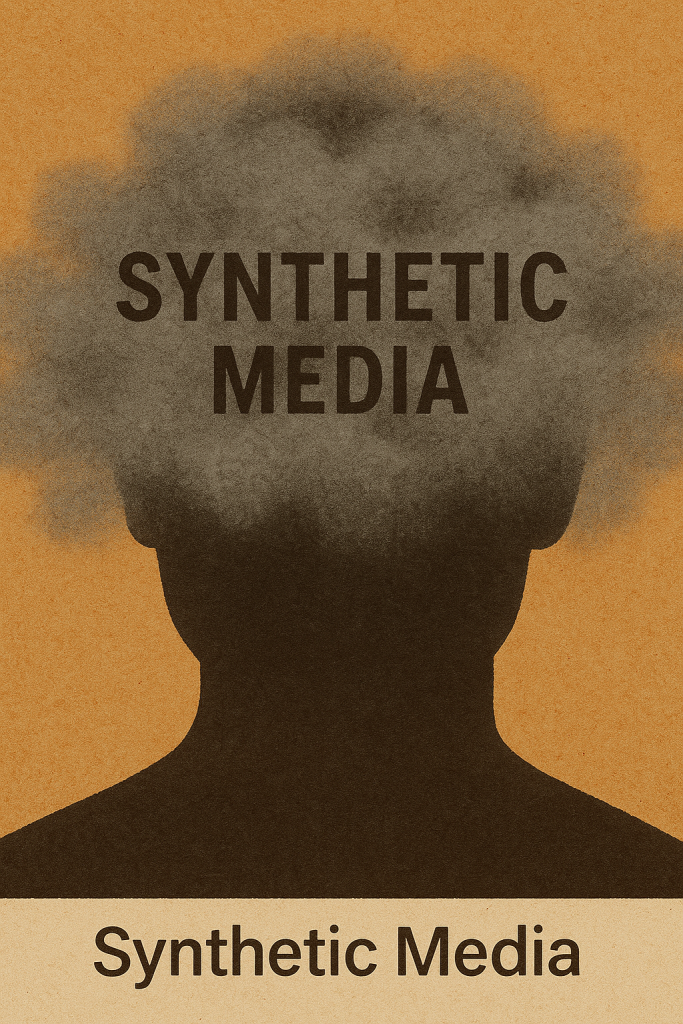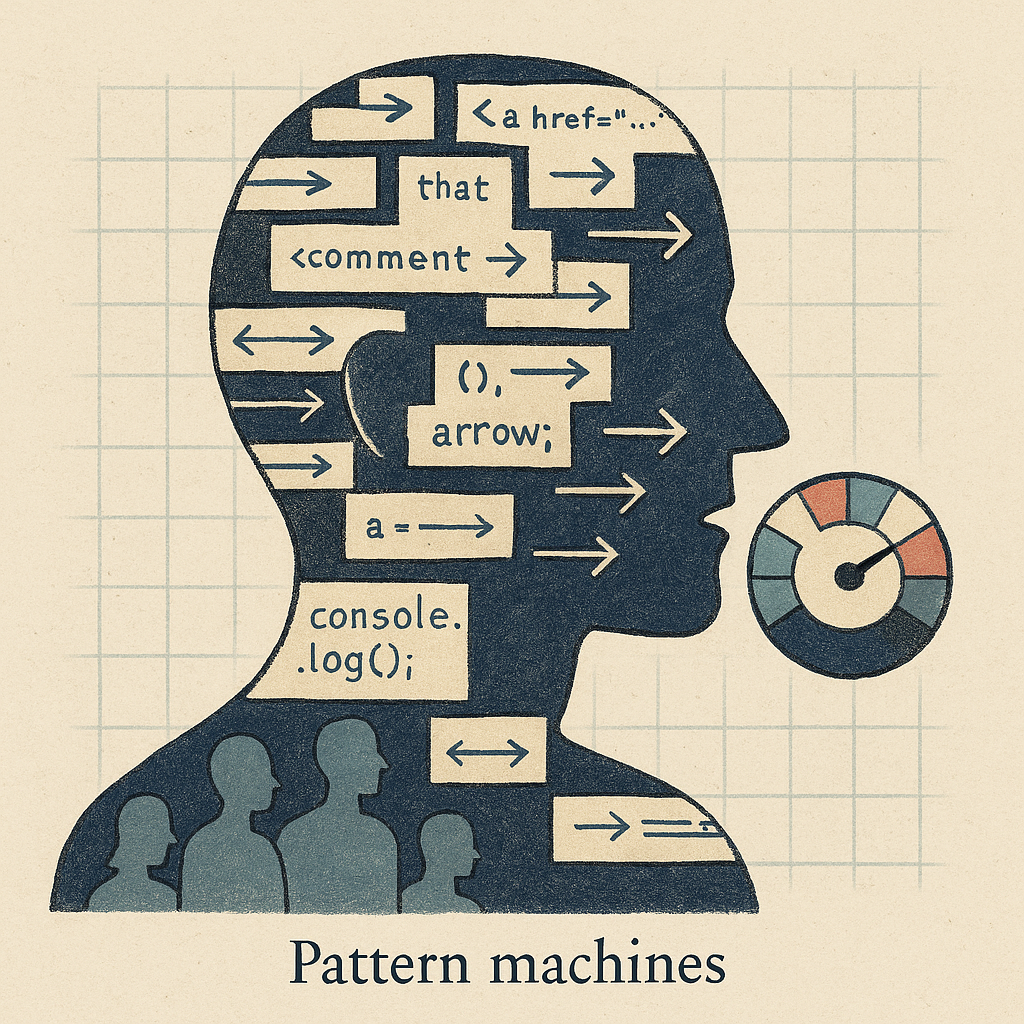Every few years a technology arrives that makes people talk in absolutes. The internet was going to make us all geniuses. Then it was going to ruin our attention forever. Smartphones were going to unite the world, then, apparently, they didn’t. Artificial intelligence is having its turn now. You hear it in the hallway at work, at soccer practice, on the radio while you’re stuck behind a school bus. Wild promises and quiet dread live in the same sentence. And the truth, which is less dramatic, sits somewhere in the middle, tapping its foot.
Let’s start with what do we know about AI.
We know these systems are pattern machines. They don’t think like people think. They run on enormous piles of text, images, code, sound, and they learn how often one thing follows another, and then they predict the next thing. Ask for a paragraph on the moon landing, you get something that sounds like a person who has read a lot about the moon landing. Ask for a python script, same idea. They are very good at remixing what already exists into something that feels new enough for daily work. Summaries, drafts, outlines, snippets of code that would have taken a junior engineer all afternoon. Useful, not magical.

We know they can be wrong with confidence. If you have used a chatbot for more than ten minutes you have seen it state an almost-but-not-quite fact. A street name off by two letters. A citation that looks real until you click. Sometimes the mistakes are small and annoying, sometimes they are big enough to matter. The odd thing is how persuasive the voice can be. A smooth tone, a clean sentence, and you nod along right up until the part where your gut says wait that cannot be true. This isn’t a small footnote. It is the part you have to plan around.
This one time, while using AI… it confidently told us how to turn off the shuffle on Amazon Music, we said “that didn’t work,” and it said “Oh right, yes – you can’t turn off the shuffle on Amazon Music.”
We know the tools help people who already have a craft. A nurse who writes patient summaries at the end of a long shift. A solo attorney drafting a first pass on a motion. A high school teacher sending quick, personal notes to parents in two languages. The work still belongs to the human, but the blank page is less scary at 11 p.m. when you just need to start. The same holds for small businesses. A landscaper can sketch a quote, a baker can write a product description that sounds like their shop smells. You can feel the edges of friction getting sanded down.
We know there are costs. Energy, for one. These models are trained on data centers that use a lot of electricity and a lot of water to stay cool. We do not need a precise number to admit the obvious, that convenience is being powered by a grid somewhere. There is also the raw material question. Much of the training data came from the public internet, scraped and sorted. Artists and writers and coders argue their work has become raw feedstock without a fair trade. Courts are being asked to figure it out and that process will take a while. It might never feel perfectly tidy.
We know bias lives in data and so it lives in the model. If certain voices were underrepresented or misrepresented in what a model saw, the outputs will bend in the same direction. Some of this can be mitigated with careful tuning, but not all of it. Which means anyone using AI at scale in hiring, housing, lending, health care, the serious stuff, needs real guardrails and audits, not just happy talk.

And we know this is not going away. You can’t put the toothpaste back. Students will grow up with it, the same way most of us grew up with web search. Workplaces will reorganize jobs around it. That part is set.
Now for what we don’t know, which is a longer list, and more honest.
We don’t know how fast jobs will change. People say the word “automation” and picture robots on an assembly line, metal arms doing what used to be human hands. AI doesn’t replace hands, it eats slices of tasks. A marketer loses ten hours a week to drafting and sorting. An analyst loses the tedious first pass. A junior copywriter loses that initial outline work, but maybe gains time to run small experiments and learn the craft in a different way. Or maybe they just lose the path in. We don’t know yet. Some job categories will shrink. New ones will appear with names that sound funny now and normal in five years. Transitional time is bumpy. That is the part that makes people nervous, and fairly so. Just look at this list of the Best DIY website Builders – you’ll see AI is a core component in almost all of them, yet AI still can’t execute a website.
We just saved over 2 hours of image searching, matching and curating by asking AI to create the images for this article.
We don’t know how much trust these systems deserve. Not in theory, in practice. A hospital can buy a tool that flags risky discharges, but how many false positives before the staff tunes it out. A newsroom can use AI to transcribe interviews and suggest headlines, but when does a suggestion become a quiet dependency. You can install a writing assistant across a company and productivity goes up on paper. But do people lose the muscle to write with voice, to choose a risky turn of phrase, to sit in the hard part where ideas form. Honestly, this could go either way. It might free us to do the judgment work or nudge us into safe sameness.

We don’t know the cultural shape of a world filled with synthetic media. We can already create convincing video of a person who was never there. It will get easier and more casual. Maybe that means misinformation all the time, everywhere. Maybe it also means a new literacy emerges, the way we learned to spot bad photoshops and spam emails. Our brains adapt. But the in-between years are foggy. Elections live in that fog, and so do reputations, and so does the day your kid asks if a clip is real and you have to answer I think so.
We don’t know how to write the rules. The law tends to trail technology and then, when it catches up, it does so in a rush. You can feel the pressure building. Who is liable for an AI mistake that causes real harm. The developer, the deployer, the user who clicked accept and moved on. How do we verify the provenance of a document or a design. What rights do you have over a model that was trained on work that looks a lot like yours. The answers will be messy, then less messy, then contested again when the next version arrives.
We don’t know what we’re teaching kids when AI sits in their backpack next to the math book. You can ban it in a classroom and students will still use it at home, or you can integrate it and try to teach discernment. Maybe assignments shift from “write this thing” to “argue with this thing and show your work.” The goal is the same as always. Curiosity, clarity, a little grit. The tactics need updating. That is hard, and teachers already have enough to do.
We don’t know if there is a ceiling. People ask if AI is on a straight line to something like general intelligence or if we are hitting diminishing returns. Some days the progress looks wild, other days it looks like we are mostly learning to wrap patterns in friendlier packaging. You can find a scientist to argue either side, sometimes the same scientist will argue both depending on the week. If you came here for certainty, sorry. Not today.
So what to do in the middle of all this knowns and unknowns. A couple of plain ideas.
Use the tools, but make them show their work. Ask for citations. Push for features that explain why a decision was suggested. Treat outputs as drafts that need a human pass, not verdicts. If you run a team, reward the human pass, the person who catches the subtle error and explains it. That is the culture you want.
Be choosy about where AI sits. Automate the boring parts and make space for the parts of work that require taste, judgment, and context. If you don’t know which parts those are, that is your first project. Write it down. Revisit it every quarter because it will change.
Insist on data hygiene. If you are feeding a model with your own documents or code or customer notes, decide what belongs and what doesn’t. Decide who can see what. Decide how to roll back a mistake. This is not glamorous, it is the plumbing, and you notice it only when it breaks, which means you should care before that.
Ask the hard questions out loud. What harm could this cause if it goes sideways. Who is left out when we design it this way. What happens to training when the internet floods with synthetic text made by last year’s model. Are we recirculating the same air. None of these are gotchas. They are basic maintenance for an era that invites shortcuts.
Also, keep a little wonder. It is okay to be impressed when a model translates a paragraph into perfect Spanish or suggests a line of code that just works. It is okay to laugh when it writes a silly poem about your dog. The point isn’t to be cynical, the point is to stay awake.
The technology will keep moving. That part we can count on. Our job, slow and slightly unglamorous, is to move our habits along with it. To separate craft from drudgery. To protect the parts of human work that don’t survive on predictions alone. To hold companies to their claims, and hold ourselves to ours.
What we know fits in a few steady lines. What we don’t is wider, and will stay wider for a while. In that gap is the living part, the trial and error, the conversations at soccer practice, the manager who changes how a team does its weekly review, the teacher who rewrites the assignment and sees it click. It is not a tidy story, but it is the one we have. And it is ours to write, with help, carefully.


